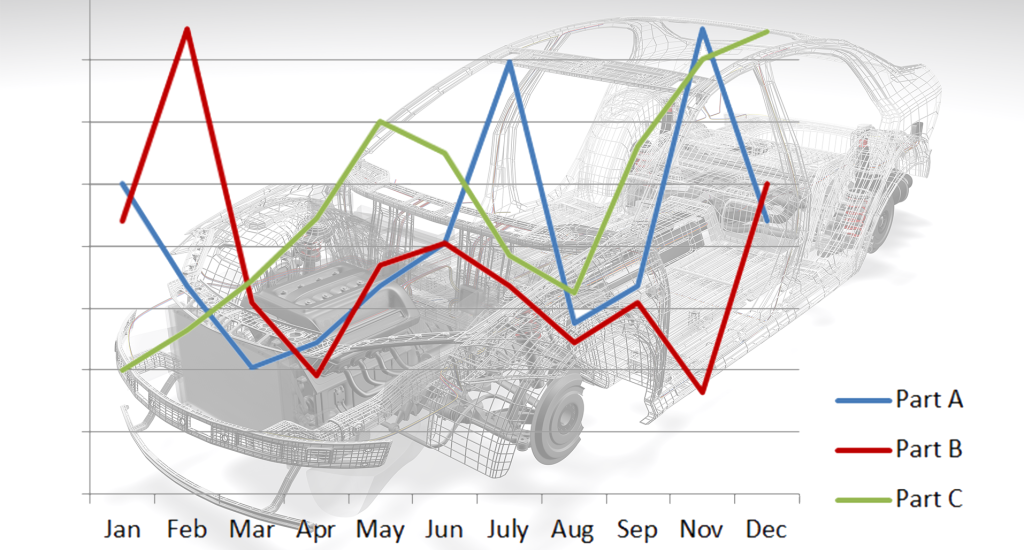
Market volatility is a constant reality for businesses in many sectors. Understanding market volatility and developing strategies for stability is crucial for navigating unpredictable business environments, ensuring long-term success and resilience. This comprehensive guide will explore actionable strategies for businesses to thrive during times of economic instability and market fluctuations.
Understanding Market Volatility
Defining Market Volatility
Market volatility refers to the degree of fluctuation in market prices, reflecting a range of factors such as economic conditions, investor sentiment, and global events. In unpredictable business environments, periods of heightened volatility can significantly impact businesses, especially those heavily reliant on market forces for sales and revenue. It is characterized by significant and rapid price swings, which necessitates a clear understanding of the dynamics at play to effectively mitigate potential negative impacts.
Recognizing the Impact of Volatility
Volatility has profound effects on various industries and businesses. From fluctuating raw material costs to shifting consumer demand, unpredictable market trends can disrupt the entire value chain. This can result in decreased profitability, reduced investor confidence, and difficulties in maintaining consistent operations. A company’s ability to weather the storm relies on its adaptability, resilience, and proactive approach to risk management.
Developing a Proactive Approach to Risk Management
Diversifying Investment Strategies
A well-diversified investment portfolio can effectively mitigate the risk associated with market volatility. Spreading investments across different asset classes, geographic regions, and industries can help reduce the impact of negative performance in any one area. This approach helps maintain stability by ensuring that the overall portfolio remains relatively unaffected by dramatic shifts in specific sectors. By diversifying your investment portfolio, you effectively manage the risk and ensure the business continues to move forward even during periods of volatility.
Implementing Contingency Plans
Having contingency plans in place is vital for navigating market volatility. These plans should outline procedures for managing potential disruptions, such as supply chain disruptions, changes in consumer demand, or economic downturns. A proactive approach involves identifying potential risks and devising specific strategies to handle them. By anticipating potential challenges and preparing strategies for response, businesses can navigate volatile market conditions with greater ease.
Analyzing Market Trends and Indicators
Staying Informed on Market Data
Staying abreast of relevant market data and indicators can help anticipate and respond to potential market shifts. By analyzing economic forecasts, industry reports, and news releases, businesses can proactively adjust their strategies to remain competitive. This helps understand the context and potential factors that influence market price fluctuations. Through continuous monitoring and analysis, businesses can take informed decisions and react swiftly to market changes.
Utilizing Financial Forecasting Tools
Sophisticated financial forecasting tools can assist in predicting future market trends. These tools leverage historical data and current market conditions to develop predictions, enabling businesses to anticipate potential challenges and opportunities. This can involve scenario planning and simulation tools to evaluate various market scenarios and determine the impact on the business.
Maintaining Strong Financial Fundamentals
Maintaining Healthy Cash Reserves
Having sufficient cash reserves is critical for navigating periods of economic uncertainty and market volatility. These reserves serve as a buffer against unforeseen economic downturns, providing the financial flexibility needed to weather market fluctuations and maintain operational stability. This helps prepare the business for future potential shocks and reduces the likelihood of business interruption during uncertain economic periods.
Establishing Strong Financial Planning
Comprehensive financial planning is fundamental to long-term stability. This includes creating detailed budgets, cash flow projections, and contingency plans that can mitigate the impact of market volatility. Strong financial planning empowers the business to navigate market fluctuations, ensuring its stability in the long run.
Adapting to Changing Consumer Preferences
Understanding Consumer Trends
Companies must continually adapt to evolving consumer preferences and behaviors. By conducting market research and staying informed about emerging trends, companies can anticipate shifts in consumer demand and adjust their products, services, and marketing strategies accordingly. Understanding and adapting to shifting consumer tastes is a crucial strategy to ensure relevance and continued success during periods of market volatility. This includes analyzing demographic changes and technological advancements to predict future consumer demands.
Enhancing Product and Service Offerings
Review and refine existing products and services based on market research and insights gathered from current consumer trends. Adapting to evolving consumer preferences is crucial for long-term stability and sustainable growth. Constantly assessing the market and consumer response is crucial to success during periods of unpredictable market dynamics.
Adapting to Changing Economic Conditions
Monitoring Economic Indicators
Keeping a close watch on macroeconomic indicators, such as interest rates, inflation, and GDP growth, is crucial in anticipating potential economic shocks. This ensures the business can adjust its strategies and operations in response to evolving economic conditions. Adaptability in economic landscapes is crucial for future success and stability.
Managing Supply Chains
Robust supply chain management is essential for maintaining resilience during market volatility. Implementing flexible and diversified supply chains can mitigate the risks of disruptions due to geopolitical events, natural disasters, or other unforeseen circumstances. Strong supply chains ensure the business can respond effectively to market volatility, ensuring continuous operations and minimizing disruptions.
In conclusion, navigating market volatility requires a proactive and adaptable approach. By combining robust financial planning, comprehensive market analysis, and a diverse investment strategy, businesses can proactively mitigate risk and position themselves for sustainable growth even during unpredictable economic times. Embrace continuous learning and seek professional guidance to stay informed and make informed decisions. The key takeaway is to understand and embrace market volatility as a normal business cycle event. The methods discussed above will provide a strong foundation for your business to thrive through the inevitable fluctuations.